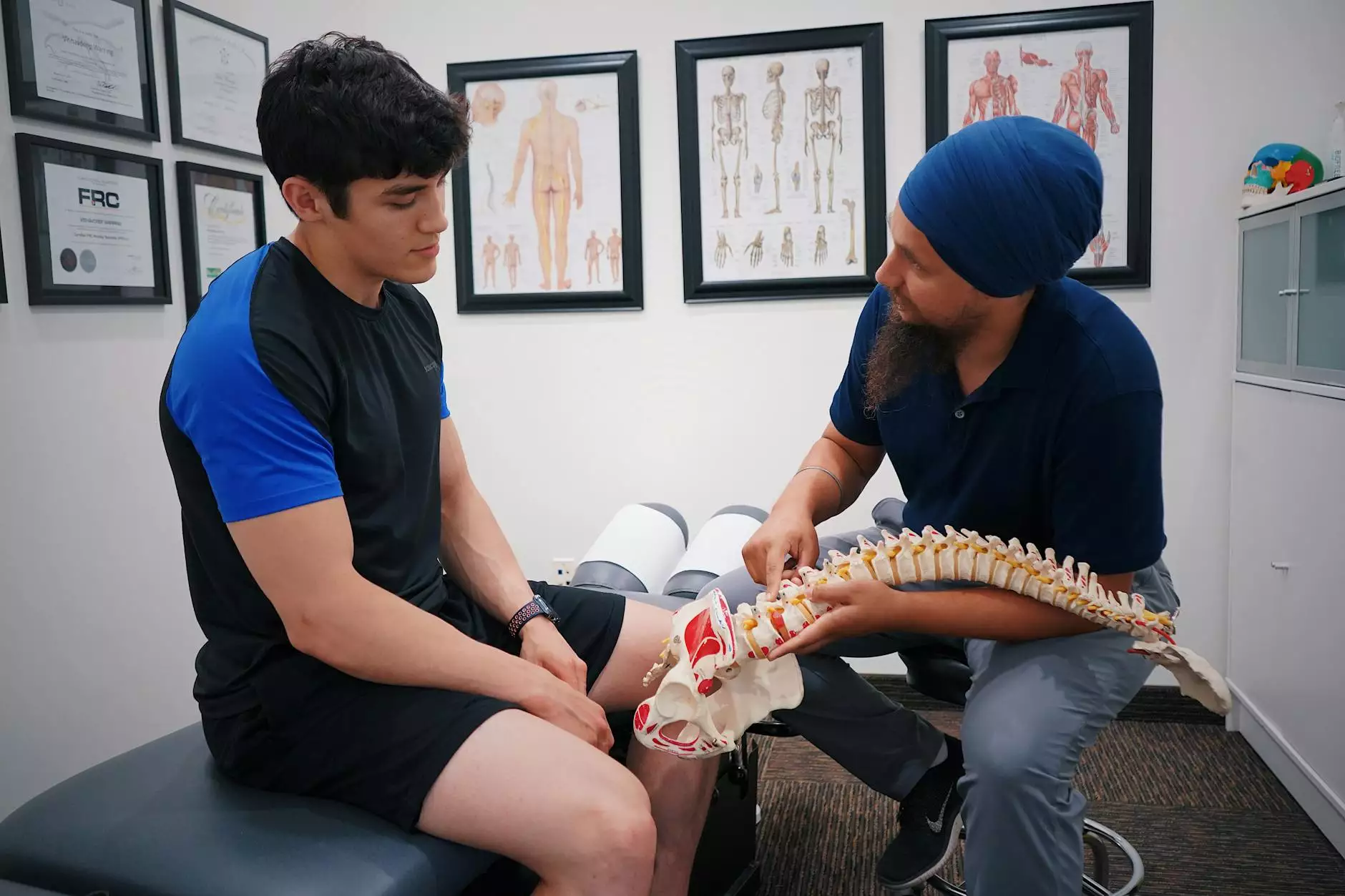The Comprehensive Guide to T4 Spinal Injury Management

T4 spinal injury refers to damage that occurs in the thoracic region of the spinal cord, specifically at the T4 vertebra. Understanding this type of injury is crucial for both patients and practitioners in the fields of health and medical care, including chiropractors and physical therapists. This article delves deeply into the nature of T4 spinal injuries, their causes, symptoms, treatment options, and overall management strategies.
Understanding T4 Spinal Injuries
Located in the upper and middle back, the T4 vertebra is part of the thoracic spine, which consists of twelve vertebrae (T1 to T12). The thoracic spine supports the rib cage and protects vital organs such as the heart and lungs. A T4 spinal injury can occur due to various reasons, including:
- Trauma: Car accidents, falls, and sports injuries are common causes.
- Degenerative Diseases: Conditions like arthritis can lead to spinal injuries.
- Infections or Tumors: These can also lead to instability or damage to the spinal cord.
What Happens in a T4 Spinal Injury?
When the spinal cord sustains damage around the T4 level, it can affect motor and sensory functions below that level. The severity and extent of these effects depend on whether the injury is complete or incomplete:
- Complete Injury: Total loss of motor and sensory function below the injury site.
- Incomplete Injury: Some degree of function remains below the level of injury, allowing for potential recovery.
Symptoms of T4 Spinal Injury
Symptoms can vary widely based on the severity of the injury. Common symptoms include:
- Loss of Sensation: Reduced or absent feeling in the torso, abdomen, and lower extremities.
- Motor Dysfunction: Weakness or paralysis in the legs and trunk muscles.
- Pain: Neuropathic pain, spasms, or discomfort in the back or legs.
- Respiratory Issues: Difficulty breathing if higher thoracic levels are involved.
Treatment Options for T4 Spinal Injuries
Managing a T4 spinal injury requires a multidisciplinary approach, often involving emergency care followed by long-term rehabilitation. The primary treatment strategies include:
Emergency Medical Treatment
Immediate response to a spinal injury is crucial. In emergency situations, the following procedures are typically performed:
- Immobilization: Using braces or collars to stabilize the spine.
- Medication: Administering steroids to reduce inflammation and prevent further damage.
- Surgery: In some cases, surgical intervention may be needed to relieve pressure on the spinal cord or stabilize the spine.
Physical Therapy
Once the patient is stabilized, physical therapy becomes vital in their recovery process. Therapists work on:
- Range of Motion Exercises: To enhance flexibility and mobility.
- Strength Training: Focusing on the upper body and remaining functional abilities.
- Gait Training: Utilizing assistive devices for walking, if applicable.
Chiropractic Care
Chiropractors can play a significant role in rehabilitation by using manual therapy techniques to:
- Improve Spinal Alignment: Correct misalignments that may be contributing to pain.
- Enhance Mobility: Through adjustments and stretching techniques.
- Manage Pain: By using therapies such as ultrasound and electrical stimulation.
Medications
Migraine, pain relief, and anti-inflammatory medications can help manage symptoms effectively. These options include:
- NSAIDs: Such as ibuprofen for pain relief.
- Muscle Relaxants: To alleviate spasms and tightness.
- Antidepressants: Sometimes prescribed for chronic pain management.
Living with a T4 Spinal Injury
A T4 spinal injury can significantly impact daily life. However, with the right support systems and treatment options, many individuals can achieve a fulfilling life. Here are strategies for adapting:
Home Modifications
Making adjustments around the home can enhance safety and accessibility, such as:
- Installing Ramps: For wheelchair accessibility.
- Modifying Bathrooms: With grab bars and accessible showers.
- Adjusting Furniture: For ease of movement and comfort.
Emotional Well-being
Dealing with a spinal injury can be emotionally challenging. Support groups and counseling can aid in:
- Connecting with Others: Sharing experiences with individuals facing similar challenges.
- Coping Strategies: Learning new techniques for stress management and emotional resilience.
- Professional Support: Engaging with psychologists or counselors specialized in spinal injuries.
Conclusion
Understanding and managing a T4 spinal injury is a multidisciplinary effort involving emergency care, rehabilitation, and ongoing support. With comprehensive treatment and determination, individuals can adapt and thrive after such an injury. Whether through the expertise of physical therapists or chiropractors, the journey towards recovery is supported by various healthcare professionals who aim to restore function, enhance mobility, and improve the quality of life.
For further information on managing T4 spinal injuries, please visit our site at iaom-us.com. We are dedicated to helping you navigate the complexities of health and recovery.









